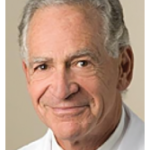WASHINGTON, D.C.—A friendly, but stern, voice talks to Joseph Kvedar, MD, vice president of Connected Health at Partners HealthCare, from his smartphone. Dr. Kvedar has just woken up.
“Good morning, Joe! Here’s the tale of the tape. Your blood pressure and cholesterol are fine. Your sleep deficit is now up to three hours for the week. You’ve put on 2 lbs. since last month. And your activity level is falling short of your goal by 25%. You need more sleep, and you need more exercise if you’re going to get into that size 40 tuxedo for Julie’s wedding next March. One hundred and forty days to go and counting. Get moving, pal!”
Later, the voice—a form of artificial intelligence Dr. Kvedar has named “Sam”—worries that Dr. Kvedar seems to be walking in the direction of a bakery for a chocolate chip cookie, warns him against it, presents him with a coupon to a nearby gym and suggests he take up swimming again.
This scenario is fictitious, but not by much. Dr. Kvedar, who gave the opening lecture at the 2016 ACR/ARHP Annual Meeting, Education at Scale—Beyond an Experiment, in November said such conversations will likely be taking place as soon as five years from now as technologies continue to advance. It’s the direction of technology in general, and healthcare will be no different, Dr. Kvedar said.
Interconnectedness of Health
“In five years, 20 billion everyday objects that we now think of as inanimate will be what you would call ‘smart,’” he said. “That is to say, they will have sensors in them and network capabilities, they’ll pick information up from their environment. They’ll process information, they’ll communicate with each other, they’ll communicate with the environment, and we’ll know the world in a very different way.”
He describes how this coming reality is taking shape in a book he published last year, The Internet of Healthy Things. It will be a world in which vast amounts of data—from heart rates to location, step counts to weather—will be synthesized in ways that will be engaging and motivating, and will make real impacts on people’s health. The result will be healthcare that permeates our daily routine.
Even better, with features like Sam, the personality of the “coach” can be tweaked to our liking—not too much drill sergeant, not too much coddling, but just right. Through questionnaires, the technology can understand what motivates us and incorporate that information into its behavior, which ultimately will benefit the user.
Where We Are
Digital health is already being woven into healthcare, of course, Dr. Kvedar said. In his area, Walgreens, CVS and Blue Cross Blue Shield in Massachusetts are already doing video health visits.
Although many physicians say they’re enthusiastic about incorporating some kind of digital health into their practices—and some already are—they’re very concerned about liability. “We’ve got to work on that,” Dr. Kvedar said. “My advice: Decide what you want to do. You may decide you don’t want to participate. But don’t be caught by surprise because you didn’t think about it or you somehow thought it wasn’t going to happen. It is happening.”
Wearable medical technology is already becoming less about giving people feedback in the form of numbers—which in the end aren’t very inspiring—than about feedback that actually gives insight, Dr. Kvedar said. And pharmaceutical companies are no longer just offering drug therapies, but are offering wearables, too.
Potential Problems
But before this world of pervasive healthcare can happen, kinks need to be ironed out. One is the idea of “frictionless data capture,” he said.
“Our patients don’t give a hoot about Bluetooth and pairing and downloading apps—too much work, thank you very much,” he said. “We’ve got to make it so easy for them that they do one thing once, the whole thing’s paired; it’s passive data upload. We haven’t gotten there yet. And that’s one of the reasons mobile devices are lagging in terms of being used in this way by our patients. Even though they’re carrying mobile devices, we’ve made it too hard for them to engage with the technology.”
Another is the quality of the analytics—when it comes to healthcare, the recommendations generated by technology need to be more accurate than often-misguided movie and book recommendations, he said.
“If it’s a health behavior that someone’s recommending, we will not get a second chance,” he said. “We can’t have goofy recommendations. If we’re going to implement something like Sam, it has to be spot on.”
Lest doctors worry about their jobs, Dr. Kvedar said the physicians will remain central and predicted that relationships between patients and their doctors would only be strengthened with these technological advances. Patients “don’t want to disappoint you,” he said.
“If we design these programs to come from your healthcare provider and the patient knows that the healthcare provider cares and someone in the office is keeping track, that ups their game,” he said. “They do not want to look like they fell off the wagon. And all of these tools enable us to measure things in a very fine way so you can tell if they fell off the wagon or not.”



